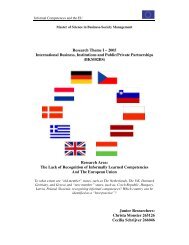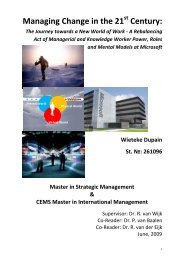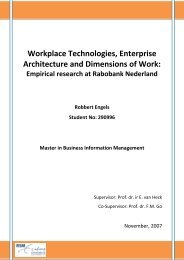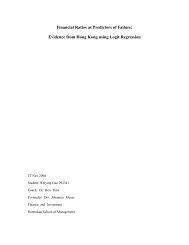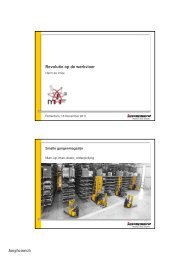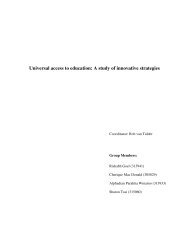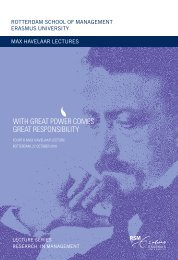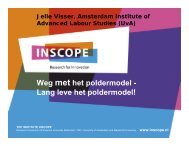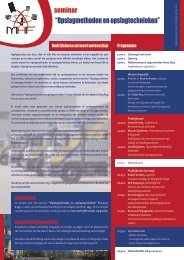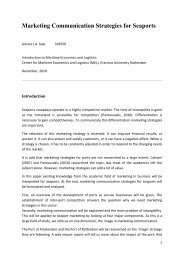here - ERIM - Erasmus Universiteit Rotterdam
here - ERIM - Erasmus Universiteit Rotterdam
here - ERIM - Erasmus Universiteit Rotterdam
Create successful ePaper yourself
Turn your PDF publications into a flip-book with our unique Google optimized e-Paper software.
A validation Study of House of Quality key performance indicators<br />
Chapter 2 - Theoretical Framework<br />
This chapter will provide an overview of previous research related to the subjects that will be<br />
discussed within this study. The first section, 2.1, will discuss literature findings about the topic of<br />
this research study; online unions. It discusses the current situation of representative organizations<br />
like a labor union and potentials for new concepts. Furthermore three future scenarios will be<br />
presented. In relation to new union concepts, section 2.2 will discuss the influence and opportunities<br />
of new media types. Especially the significance of changing ways of interactions between a supply<br />
and demand sides will be highlighted.<br />
One specific type of new media are virtual communities. A review of the concept, types and<br />
relevance of virtual communities will be provided in this section 2.3. Section 2.4 presents the<br />
SERVQUAL model which will be used to measure the performance of the online union. Data provided<br />
by the SERVQUAL model will be processed into the method of Quality Function Deployment. This<br />
research study will focus on the design process of the online union. The House of Quality presented<br />
in section 2.5.2 will be used to design the concept of the online union to the needs of its members.<br />
The established theoretical framework forms the foundation for the conceptual model. Section 2.5<br />
presents the conceptual model for the current research study<br />
2.1 Online trade unions<br />
Problems in recruitment and retention of members over the past two decades form the foundation<br />
for the decline of traditional labor unions. In order to reverse this decline, unions should adapt to the<br />
needs of the changing workforce and from this perspective develop new types of unions that are in<br />
shape with the needs of the workforce and are appropriate to the 21th century (Heery et al, 2000).<br />
The existing decline increases the need for renewal of union memberships. According to Greene et al<br />
(2000) it is important that renewal of a union is not limited to existing areas but unions should also<br />
be aware of recruitment possibilities in traditionally non-unionized sectors and growth areas of the<br />
economy like the service sector. Heery et al (2000) mentioned in this case also the increase of the<br />
contingent workforce, which includes temporary work, agency work and freelance work.<br />
The growth of the internet and many different information and communication technologies is also<br />
challenging the role of traditional representative organizations like labor unions. Greene et al (2000)<br />
argue that for their renewal labor unions should use IT options like internet, to organize in a more<br />
innovative and potentially more effective way. In particular, the use of the internet in the labor union<br />
21




